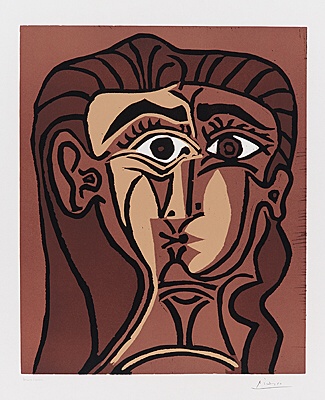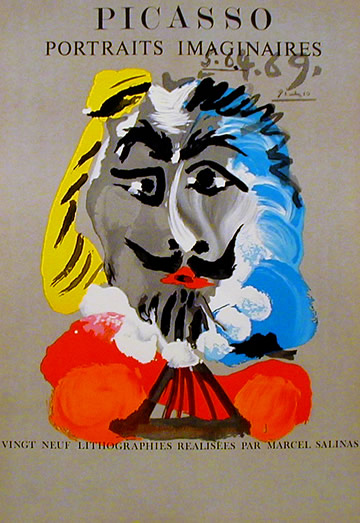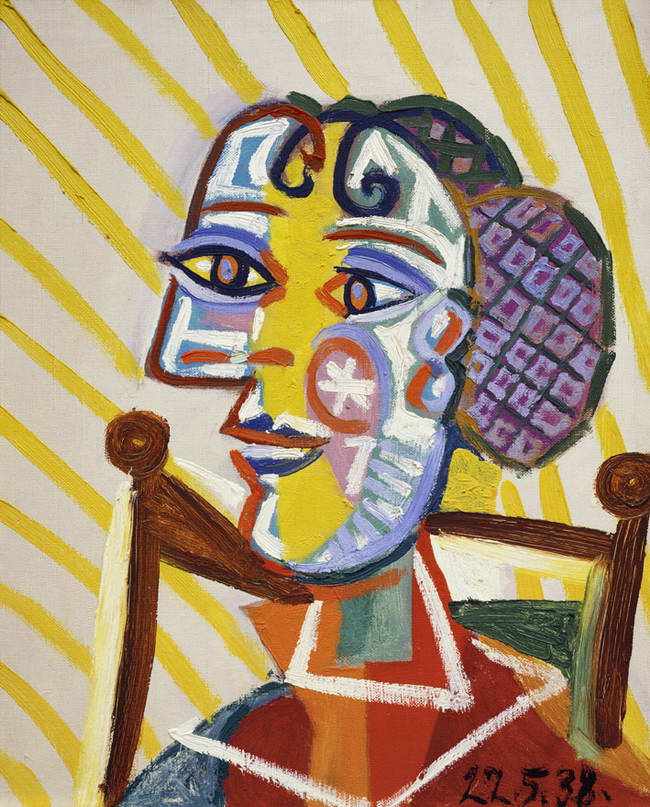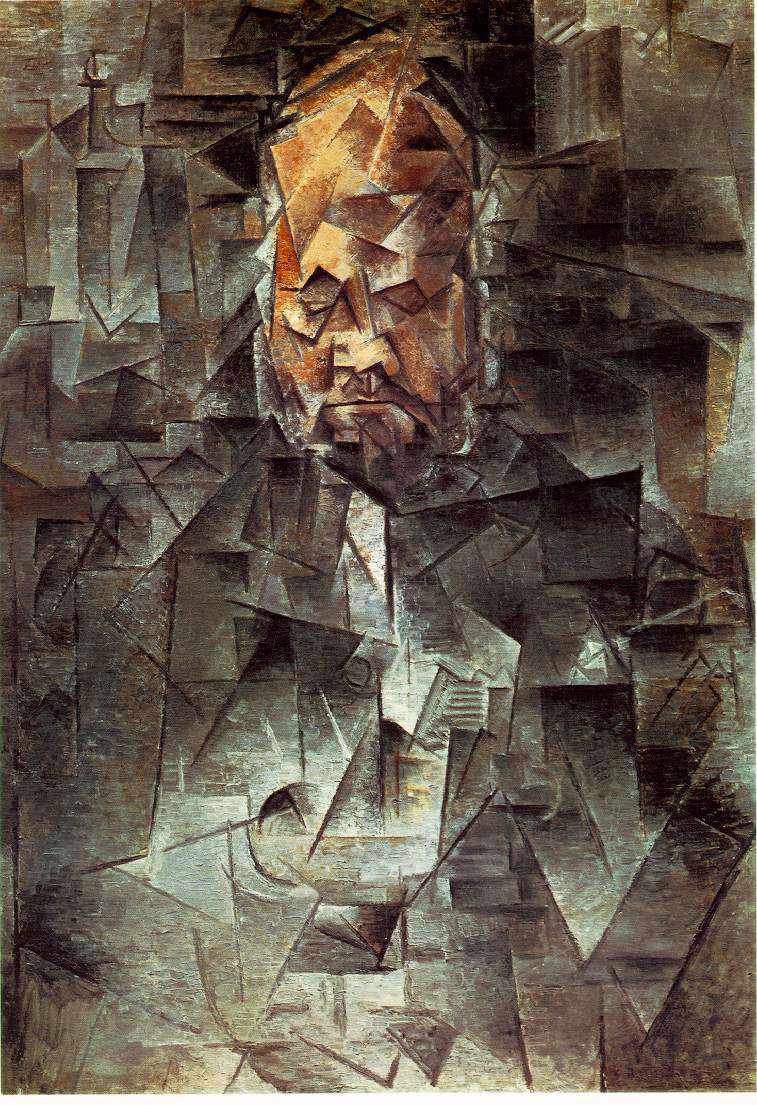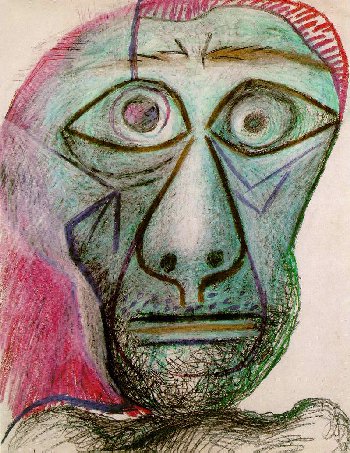Guggenheim Museum on Francis Bacon's Passion for the Apes

Study for Chimpanzee, March 1957
"Although Francis Bacon is best known for his alienated and often hideously distorted human figures, animals are the subject of at least a dozen of his canvases. He rarely worked from nature, preferring photographs, and for images of animals he often consulted Eadweard Muybridge’s Animals in Motion, Marius Maxwell’s Stalking Big Game with a Camera in Equatorial Africa, and pictures from zoological parks. Intrigued by the disconcerting affinities between simians and human beings, he first compared them in 1949 in Head IV (Man with a Monkey) (formerly Collection Geoffrey Gates, New York), in which a man’s averted face is concealed by that of the monkey he holds.
Like his human subjects, Bacon’s animals are shown in formal portraits or candid snapshots in which they are passive, shrieking, or twisted in physical contortions. The chimpanzee in the Peggy Guggenheim work is depicted with relative benevolence, though the blurring of the image, reflecting Bacon’s interest in frozen motion and the effects of photography and film, makes it difficult to interpret the pose or expression. In composition and treatment it is close to paintings of simians executed in the fifties by Graham Sutherland, with whom Bacon became friendly in 1946. The faint, schematic framing enabled Bacon to “see” the subject better, while the monochrome background provides a starkly contrasting field that helps to define form." (See: Guggenheim Museum Francis Bacon Collection, supra.
------------------
------------------
 "...Likewise, in 'Figure With Monkey' from 1951, a man and monkey are separated by a fence painted from a blur of diagonal hatching marks in brilliant purples and deep blues. The man reaches up for the animal, and the hand and mouth meet in a confusing few swaths of fleshy colored paint. Is this gentle touching or biting? And, for that matter, who is caged, man or monkey?" (See: Screaming in Paint - Exhibit Plumbs Depths of Bacon's Unsettling Works, By MARY LOUISE SCHUMACHER mschumacher@journalsentinel.com
"...Likewise, in 'Figure With Monkey' from 1951, a man and monkey are separated by a fence painted from a blur of diagonal hatching marks in brilliant purples and deep blues. The man reaches up for the animal, and the hand and mouth meet in a confusing few swaths of fleshy colored paint. Is this gentle touching or biting? And, for that matter, who is caged, man or monkey?" (See: Screaming in Paint - Exhibit Plumbs Depths of Bacon's Unsettling Works, By MARY LOUISE SCHUMACHER mschumacher@journalsentinel.comPosted: Jan. 26, 2007), at: http://www.jsonline.com/story/index.aspx?id=557375 ).
----------------------
 Study for a Chimpanzee 1957
Study for a Chimpanzee 1957"There's a picture of a screaming chimpanzee - a simian form with bared mouth - that goes to the core of Bacon's work. If you then look at Head 1 from 1948 and Head 2 from 1949, say, both are half-animal, half human, as if morphing between forms. There was no difference to Bacon. He knew humans were animals: primal and confrontational. You see it also in his figures of screaming popes. He always saw the animal in man, even in in the supreme pontiff. There's that ambiguity with Bacon: you don't know if you're witnessing a scream of pain, anger or release. I think probably that's why Bacon was such a great artist.." Michael Peppiatt, Great British Bacon, Radio Times, 19-25 March, 2005. (See: Art Gallery of Alex Alien, supra).
TIME/CNN
(HENDERSON, Nev.) — Democrat Barack Obama says he won't just be a president for the American people, but the animals too.
"What about animal rights?" a woman shouted out during the candidate's town hall meeting outside Las Vegas Wednesday after he discussed issues that relate more to humans, like war, health care and the economy.
"I think how we treat our animals reflects how we treat each other," he said. "And it's very important that we have a president who is mindful of the cruelty that is perpetrated on animals."
"I've repeatedly voted to increase penalties for animal cruelty and violence and, importantly, to require psychological counseling for those who engage in this behavior as part of the punishment. In addition to being unacceptable in its own stead, violence towards animals is linked with violent behavior in general, especially domestic violence, and we need to acknowledge this connection and work to treat it. Strong penalties are important and I support them, but we know that incarceration alone can't solve all our problems. As president, I'd continue to make sure that we treat animal cruelty like the serious crime it is and address its connection to broader patterns of violence."
The Presidential Files: Barack Obama and the Dog-acity of Hope
In his questionnaire response, Obama pledges support for nearly every animal protection bill currently pending in Congress, and he says he will work with executive agencies such as the U.S. Department of Agriculture to make their policies more humane. He writes of the important role animals play in our lives, as companions in our homes, as wildlife in their own environments, and as service animals working with law enforcement and assisting persons with disabilities.
Obama also comments on the broader links between animal cruelty and violence in society: "I've repeatedly voted to increase penalties for animal cruelty and violence and, importantly, to require psychological counseling for those who engage in this behavior as part of the punishment.
In his eight years as an Illinois state senator, Obama voted for at least a dozen animal protection laws that came up during that time. He supported measures, among others, to allow the creation of pet trusts to provide for the long-term care of companion animals; to upgrade the penalties for cruelty to animals; to require psychological counseling for people who abuse animals; to require that veterinarians report suspected acts of cruelty and animal fighting; and to ban the slaughter of horses for human consumption—which was significant because, at the time, Illinois was one of only two states (with Texas) where horse slaughter plants operated.
After being elected to the U.S. Senate in 2004, Obama has continued his record of support for animal protection laws. He voted to end the federal funding of horse slaughter in 2005, and he is currently a co-sponsor of new legislation to stop horse slaughter and the export of horses for human consumption. He co-sponsored legislation which was enacted this May to upgrade the federal penalties for dogfighting and cockfighting, and he is a co-sponsor of new legislation to ban the possession of fighting dogs and being a spectator at a dogfight. He signed a letter requesting increased funds for the enforcement of the Animal Welfare Act, Humane Methods of Slaughter Act, and the federal animal fighting law, and he also sent a letter to the National Zoo expressing his concern for the care of Toni the elephant.
Senator Obama scored 20 percent on the 2005 Humane Scorecard because he voted to end horse slaughter, but at the time, had not yet co-sponsored bills dealing with animal fighting, puppy mills, or downer livestock, or signed the enforcement funding letter. His score improved to 60 percent on the 2006 Humane Scorecard, as he signed onto the animal fighting bill and the funding letter. For 2007, Obama will receive credit on the scorecard for co-sponsoring the animal fighting and horse slaughter legislation, but he has not yet co-sponsored major animal welfare bills such as the Pet Safety and Protection Act.
While Obama has said that he supports the rights of hunters and sportsmen, he has not gone out of his way to stress the point, and has not—as some other candidates have—dressed up in camo and gunned down animals with the television cameras in tow. Obama's personal interactions with animals, in fact, appear to be much more humane. He has joined the fight against puppy mills, and will appear in a new book by my friend Jana Kohl about her rescued dog, Baby, who survived a decade in a puppy mill.
Thomas Catan in Madrid
In what is thought to be the first time a national legislature has granted such rights to animals, the Spanish parliament’s environmental committee voted to approve resolutions committing the country to the Great Apes Project, designed by scientists and philosophers who say that humans’ closest biological relatives also deserve rights.
Reactions to the vote were mixed. Many Spaniards were perplexed that the country should consider it a priority when the economy is slowing sharply and Spain has been rocked by violent fuel protests. Others thought it was a strange decision, given that Spain has no wild apes of its own.
Animal rights?
Sources: The World Atlas of Great Apes; Times archives
Spain’s parliament on Wednesday voiced its support for the rights of great apes to life and freedom, Reuters reports.
"This is a historic day in the struggle for animal rights and in defense of our evolutionary comrades, which will doubtless go down in the history of humanity," Pedro Pozas, Spanish director of the Great Apes Project, tells Reuters.







